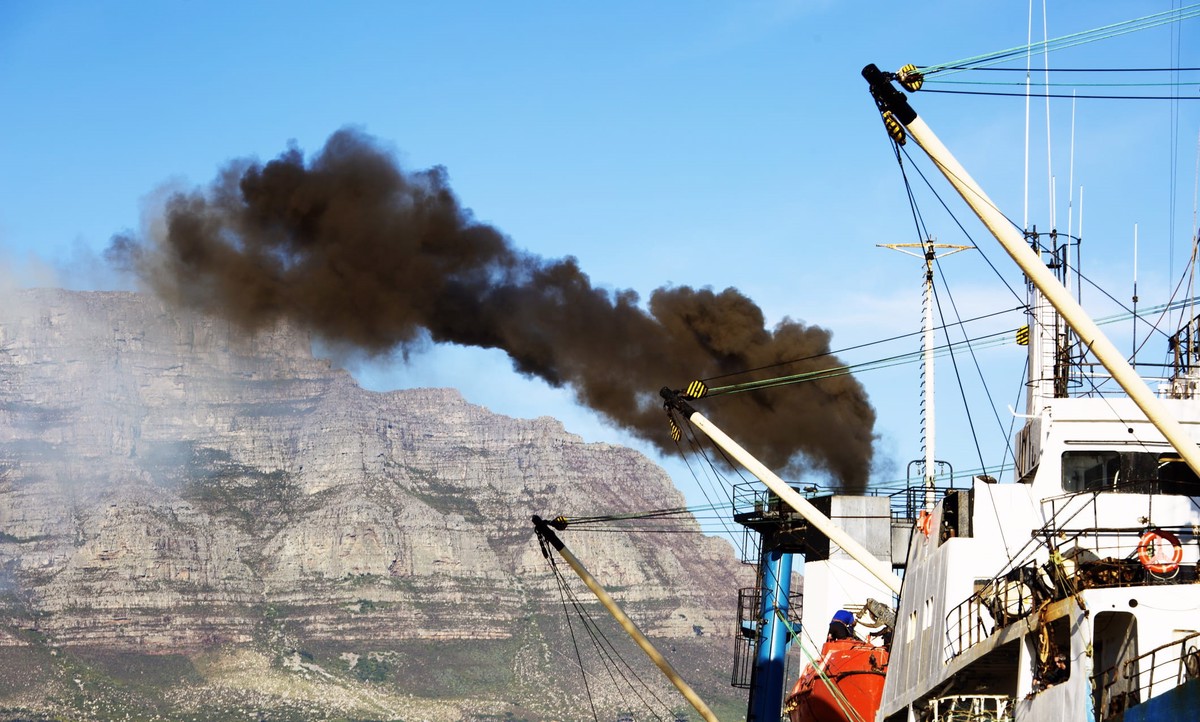EU ETS should include maritime black carbon emissions – ICCT
The International Council on Clean Transportation (ICCT) urges the EU to include black carbon emissions from ships in future revisions of the EU ETS.
 PHOTO: Black smoke emitted from a ship. Getty Images
PHOTO: Black smoke emitted from a ship. Getty Images
Shipping emissions will be included in the EU's Emissions Trading System (EU ETS) from 2024.
The ETS will apply to cargo and passenger ships exceeding 5,000 gross tonnes. It will be phased in over three years, starting with 40% of carbon dioxide (CO2) emissions covered in 2024, 70% in 2025 and 100% from 2026.
Starting in 2024, shipping companies will be liable for their fleet's CO2 emissions. Methane and nitrous oxide emissions will be included in the EU ETS starting in 2026.
Now the ICCT, an independent transport-focussed think-tank, has called on the EU to include maritime black carbon emissions in future revisions of the EU ETS Directive.
Black carbon, commonly known as soot, is emitted during incomplete combustion of fossil fuels.
“Although as a ‘short-lived climate pollutant’ it stays in the atmosphere for only a few days or weeks, in that short time, it can have a dramatic impact on the climate,” the UN’s Climate and Clean Air Coalition explains. “Black carbon strongly absorbs sunlight, directly heating the atmosphere. When it falls on snow and ice, it accelerates melt, revealing darker land or water beneath, including in remote regions of the world, like the Arctic.”
“These [black carbon] emissions from international shipping accounted for about 7% of all CO2e emissions in 2018, based on 100-year global warming potentials, and emissions of BC from shipping increased by 12% from 2012 to 2018,” ICCT said.
The ICCT wrote in a white paper last year that a ship can "immediately reduce" its black carbon emissions by 50-80% by switching to distillate fuels like LSMGO instead of residual fuels like VLSFO.
“Distillate fuels are available, they are compatible with existing marine engines, and most ships already carry them on board,” ICCT added. Using liquefied natural gas (LNG) to power ships can cut these emissions even further, up to 97%, it suggested.
However, LSMGO emits CO2 due to its fossil fuel origin and LNG emits methane, which is a more potent greenhouse gas (GHG) than CO2.
Since EU ETS will include methane and nitrous oxide emissions alongside CO2 starting in 2026, these fuels may not be optimal for reducing overall GHG emissions and meeting EU ETS' tightening targets.
Ships can instead use biofuels or bio- and e-LNG as cleaner bunker fuel alternatives to LSMGO and LNG.
Biofuels can be used in existing diesel engines without any modification and are widely available across multiple European ports. Bio- and e-LNG can be used in existing LNG engines, but their availability is still limited in the European market.
First EU ETS review is scheduled for 31 December 2024, followed by second at the end of 2026.
By Konica Bhatt
Please get in touch with comments or additional info to news@engine.online






